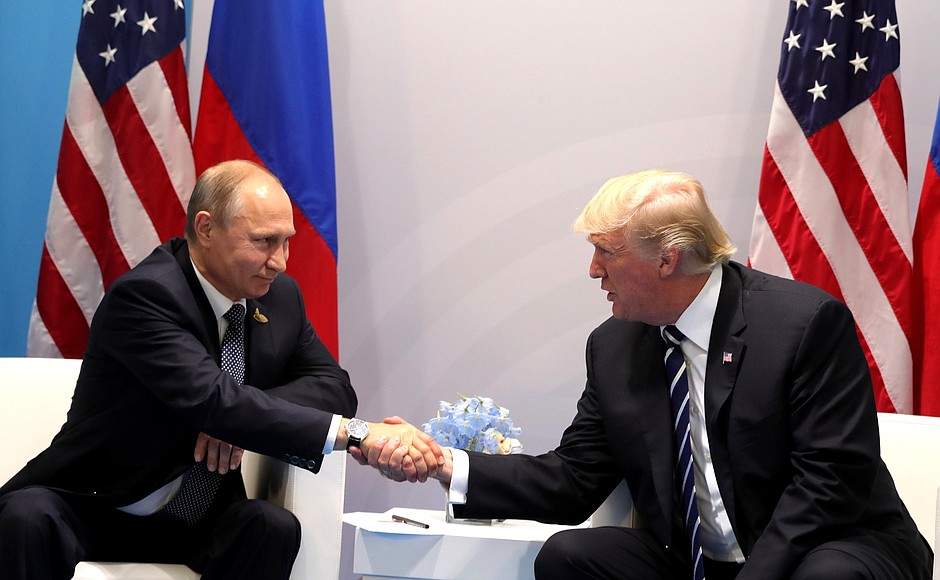Overlooked in the storm about US President Trump’s Helsinki press conference with President Putin on 16 July was the Russian leader’s call for Moscow and Washington to cooperate to stabilise oil prices. The event was a shambles, but that suggestion makes sense.
Russia is the world’s largest oil producer, with output of more than 11 million barrels a day (b/d) in June. The US – the biggest oil consumer – saw its production hit the same level for the first time in July, and it is thought that this could rise to 12 million b/d by the end of next year.
Washington and Moscow have one thing in common: prices above $50 a barrel are good for them both.
Saudi Arabia is prioritising cooperation with global oil’s big two. In 2016, the kingdom forged a deal formalising Russia’s involvement with OPEC in an agreement including 24 countries that together account for more than half of the world’s oil. It is also represented on the committee that monitors adherence to the deal’s production targets.
At the end of June, President Trump called Saudi Arabia’s King Salman about rising oil prices, caused in part by expectations that US sanctions will reduce Iranian oil exports. Trump says Riyadh agreed to increase production by up to 2 million b/d. Saudi Arabia, however, maintains that King Salman only said the kingdom would pump more if needed. What is indisputable is that Saudi oil output in June rose 500,000 b/d to 10.5 million b/d.
Such open US interference with OPEC is unlikely to happen again. But it will not be needed. Saudi Arabia’s desire to please the US when it comes to oil is self-evident.
How well do you really know your competitors?
Access the most comprehensive Company Profiles on the market, powered by GlobalData. Save hours of research. Gain competitive edge.

Thank you!
Your download email will arrive shortly
Not ready to buy yet? Download a free sample
We are confident about the unique quality of our Company Profiles. However, we want you to make the most beneficial decision for your business, so we offer a free sample that you can download by submitting the below form
By GlobalDataIran is frustrated but powerless. Smaller OPEC producers are also being marginalised by the triple oil entente involving Moscow, Riyadh and Washington. But it is probably good news for everyone else.
The 2014-16 oil price slump has undermined spending on conventional upstream projects. The International Energy Agency’s World Energy Outlook, released in July, says upstream capital expenditure will fall by more than half in 2018. Worldwide, companies investing in upstream projects are shifting to short-cycle and high-decline production. The US shale industry is the only area of the global upstream business in good health.
In contrast, oil demand continues to increase. Global consumption could average more than 100 million b/d for the first time in the final quarter of 2018, and should continue to grow.
It will be down to governments, and the oil companies they own, to encourage – or directly provide – the necessary investment. Without it, there will be persistent oil price volatility that will rock the global economy. An energy-based pact between Russia, Saudi Arabia and the US is perhaps just what the world now needs.
This article is sourced from Offshore Technology sister publication www.meed.com, a leading source of high-value business intelligence and economic analysis about the Middle East and North Africa. To access more MEED content register for the 30-day Free Guest User Programme.









Related Company Profiles
Offshore Technology Corp